by Larry Rohter, ‘The New York Times,’ July 12, 2013

Scene from the documentary “The Act of Killing,” directed by Joshua Oppenheimer.
Early in “The Act of Killing,” Joshua Oppenheimer’s startling new documentary about mass murder and impunity in Indonesia, a death squad leader named Anwar Congo, dapper in white pants and a lime-green shirt, demonstrates how he strangled hundreds of people with wire. It was quicker and less messy than beating them to death, he explains matter-of-factly, then breaks into a dance routine, performing the cha cha cha for the camera.
“The Act of Killing,” which opens on Friday, is crammed with unsettlingly bizarre moments like that, blending the horrific and the absurd in a disturbing cocktail. Time after time, the killers joke and brag about their deeds, which earns them applause on an Indonesian TV talk show, praise from officials in the government in power today and condemnation from the human rights groups that want to see them brought to justice.
But Mr. Oppenheimer’s film, which counts Werner Herzog and Errol Morris as its executive producers and was made by a largely Indonesian crew, is also stirring controversy because of its unorthodox form. Re-enactments are always a source of disagreement in the documentary world, but Mr. Oppenheimer has taken that longstanding debate to a new level by encouraging the perpetrators of human rights abuses to restage their crimes, on film and for a global audience.
“I think it’s our obligation as filmmakers, as people investigating the world, to create the reality that is most insightful to the issues at hand,” Mr. Oppenheimer, 38, said in a recent interview. “Here are human beings, like us, boasting about atrocities that should be unimaginable. And the question is: Why are they doing this? For whom are they doing this? What does it mean to them? How do they want to be seen? How do they see themselves? And this method was a way of answering those questions.”
The events initially addressed in “The Act of Killing” are little known in the West: the slaughter of as many as a million people in Indonesia following the military’s seizure of power there in 1965. The victims were labeled Communists but included labor leaders, ethnic Chinese and intellectuals, with paramilitary groups carrying out the killings at the behest of the Indonesian Army and with the support of the United States and its allies, who worried that Indonesia, like Vietnam, would fall into Communist hands.
In Indonesia, the killings were “a kind of open secret, kept discreetly hidden so that if you wanted to, you could pretend it wasn’t happening,” said John Roosa, a scholar of Indonesian history at the University of British Columbia and the author of “Pretext for Mass Murder,” the leading book about the 1965 massacres. “So this film has become a provocation, an impetus for Indonesians to go back to the perpetrators and say, ‘Tell us exactly what happened.’ ”
Organized killings occurred all across Indonesia, the world’s fourth most-populous country, but Mr. Oppenheimer focuses on Medan, a large city in northern Sumatra. There a group of so-called “movie gangsters,” fans of John Wayne and Marlon Brando, as well as of mafia and American B-movies, did much of the killing, inspired in part by the films they loved.
Mr. Congo, the focus of the documentary, tells of seeing an Elvis Presley movie, then skipping across the street, “still in the mood of the film,” to the roof of the building where he would garrote his victims. “It was like we were killing happily,” he tells Mr. Oppenheimer.
Born in Texas, educated at Harvard and now based in Europe, Mr. Oppenheimer is a constant presence in “The Act of Killing,” always outside the frame but asking questions of the killers in their native tongue, which he picked up working on films like “The Globalisation Tapes,” and being addressed by them. He said the decision to stage the re-enactments emerged as a logical extension of his initial interviews with some 40 death squad members. They had a natural theatricality, he said, which led him to offer to underwrite and film their re-enactments of their deeds. The killers did not get a salary but were paid what Mr. Oppenheimer called a “modest per diem” (approved by the University of Westminster and the British Arts and Humanities Research Council, which financed the re-enactments).
“Within minutes of meeting me, they would tell me horrible stories, often boastfully, and would say, ‘How about if we go to the place where I killed people, and I will show you how I did it?’ ” he recalled. “And then they would often lament afterwards, ‘Oh I should have brought a machete along to use as a prop,’ or ‘I should have brought friends along who could play victims, it would have been more cool that way.’ ”
Given free rein, the death squad members molded their performances to fit their favorite film genres. One scene was staged as a western, with Mr. Congo and his comically portly sidekick, Herman Koto, wearing cowboy hats, while others were done as film noir or horror. (In a critic’s notebook, A. O. Scott of The Times wrote that the film “destabilizes our sense of the boundary between make-believe violence and its real-world counterpart.”)
There is even one exceedingly peculiar musical scene, with female dancers gyrating by a waterfall, as “Born Free” plays on the soundtrack and one of Mr. Congo’s victims gratefully places a medal around his killer’s neck, saying, “For executing me and sending me to heaven, I thank you a thousand times.” When Mr. Oppenheimer showed that sequence to Mr. Herzog on his laptop over breakfast at a London hotel, Mr. Herzog immediately decided he wanted to become involved in the film.
“Joshua Oppenheimer is not the inventor of the casual and unbelievable surrealism that seeps into this film from all corners,” he said. “It does not come from him, it is not imposed by him. You watch this, and you know that in a way, it’s real. And yet you cannot believe that reality can take forms as crazy and weird as that.”
Without the staged scenes, “you would end up with a self-righteous, mediocre film you would see on television, a regular issues film, and I say that with venom,” Mr. Herzog continued. “These are precisely the scenes that would be cut” in a conventional documentary.
But those same scenes made the film a hard sell, even to producers and foundations accustomed to difficult material. “No one would fund the re-enactments because either it seemed morally suspect or they seemed impossible,” Mr. Oppenheimer recalled. “One commissioning editor said, ‘I don’t want my strand awash with atrocity.’ I’ll never forget that.”
The questioning has continued at showings of “The Act of Killing” on the international festival circuit. In Berlin, one audience member suggested that what Mr. Oppenheimer had done was “like having SS officers re-enact the Holocaust,” to which he said he replied that “it isn’t, because the Nazis are no longer in power,” whereas the Indonesian death squad members still serve and enjoy the protection of the state.
More than a score of the film’s Indonesian crew members, out of fear of retribution, asked to remain anonymous in the credits. Among them was the co-director, a 41-year-old from a literary family, who spoke by phone from his home in central Java of the personal challenge of the production, which took nearly a decade.
“The most difficult part was to keep your feelings to yourself,” he said. “You feel annoyed, angry. How could these people tell these horrible stories so lightly and so proudly? You just want to challenge them right away. But you have to keep telling yourself to be patient, to let them tell the story the way they like. Because then we can learn something about the whole system of destruction.” Mr. Oppenheimer is working on a follow-up about the victims and their families, who have been harassed or threatened when they speak out.
Initially, Mr. Congo seems an utterly unsympathetic figure, vain and egotistic. Eventually, though, the re-enactments appear to lead Mr. Congo to some sort of remorse and moral awakening.
Or maybe the remorse isn’t genuine. Perhaps it’s just another performance for the camera. After all, Mr. Oppenheimer acknowledged, the title “The Act of Killing” carries a double meaning, referring both to the murders in 1965 and the later performances for the camera. Mr. Congo even reminds himself “my acting must be violent.”
In view of all those issues, it seems pertinent to ask if “The Act of Killing” is a documentary at all. Mr. Morris, who has thought and written about the subject at considerable length, has no doubts.
“Of course it’s a documentary,” he said. “Documentary is not about form, a set of rules that are either followed or not, it’s an investigation into the nature of the real world, into what people thought and why they thought what they thought.”
But Mr. Oppenheimer offered a more nuanced view. He distinguishes between the observational style of the film’s first half and what comes after it pivots to the re-enactments.
“I think it almost stops being a documentary altogether,” he said. “It becomes a kind of hallucinatory aria, a kind of fever dream.” At that point, he added, the film “transcends documentary” and becomes a strange hybrid creation.
But no matter what you call it, Mr. Morris said “The Act of Killing” was a work of art. Prefacing his remarks by saying, “I think I can speak independently of my role as executive producer, because I have no financial interest in this film,” he continued: “The most you can ask from art, really good art, maybe great art, is that it makes you think, it makes you ask questions, makes you wonder about how we know things, how we experience history and know who we are. And there are so many amazing moments like that here.”
———————————
MOVIE REVIEW
By A. O. SCOTT
Published: July 18, 2013
Films about historical atrocities, whether documentaries or not, usually embrace the perspective of victims, survivors or resisters. The dead cry out for commemoration, and the living need to be provided with consoling stories of courage and resilience. Viewers generally prefer to identify with the innocent, the lucky and the brave, rather than with the monstrous but no less human perpetrators of crimes against humanity.
More About This Movie
The Act of Killing
Drafthouse Films
In the documentary “The Act of Killing” Anwar, center, with a model of himself, offers lessons in death-squad technique.
Drafthouse Films
Anwar, far right, on an Indonesian talk show. The audience applauded his homicidal exploits.
There are, nonetheless, a few movies that try to take us inside the minds and motives of the guilty, and to show us the familiar — the banal — face of evil. Claude Lanzmann’s “Shoah”(recently reissued on DVD by the Criterion Collection) is a notable and still notably rare attempt to explore genocide not only as a historical cataclysm but also as a result of innumerable instances of actual, ordinary behavior.
Though his methods differ from Mr. Lanzmann’s, and his aims are less comprehensive, the 38-year-old filmmakerJoshua Oppenheimer undertakes a similar inquiry in “The Act of Killing,” his dogged, inventive, profoundly upsetting and dismayingly funny documentary about the Indonesian massacres that began in 1965 and claimed, by some estimates, as many as 2.5 million lives over the next year.
If those murders are less well known than others (like the Khmer Rouge slaughter in Cambodia a decade later), it is partly because Indonesia has not undergone the kind of public reckoning that often follows such catastrophes. “History is written by the winners,” muses one of Mr. Oppenheimer’s subjects, who led a right-wing death squad in North Sumatra. “And we are the winners.”
He and his former colleagues, who still keep in touch and occasionally socialize with one another, lead comfortable, even privileged lives. Some serve in provincial or national governments. They speak at rallies of Pancasila Youth, a nationalist paramilitary group still apparently popular — and also still feared — for its role in wiping out suspected Communists almost 50 years ago.
Perhaps the most startling thing about the killers in “The Act of Killing” is that they seem to have no interest in denying, excusing or minimizing their crimes. On the contrary, they are candid, even boastful about what they have done, and eager to share their recollections of torture and murder. “Never forget” is traditionally the slogan of victims fending off revisionism, indifference and the passage of time, but in this case the killers themselves seem most interested in keeping the memory alive.
The way they do this is, to say the least, unusual, both in the annals of barbarity and the history of cinema. Mr. Oppenheimer focuses on two men, Anwar and Herman, self-described gangsters who enthusiastically devote themselves to the project of making a movie about the brutal campaigns against Communists, ethnic Chinese and critics of the military government that overthrew President Sukarno in 1965. But instead of putting together the usual archival or talking-head documentary, they and Mr. Oppenheimer collaborated on a series of elaborate re-enactments, using makeup, costumes and special effects to evoke the terror and (for Anwar and Herman, the glory) of the past. They become the stars and auteurs of a grandiose spectacle, in relation to which “The Act of Killing” stands as a deadpan making-of documentary.
Sometimes Anwar, a slender, dapper grandfather with a jaunty walk and a sly, disarming smile, offers straightforward lessons in death-squad technique. Beating a suspected Communist to death produced too much blood, so Anwar preferred strangling his victims with wire. At other times he and Herman dress up like movie gangsters or other movie archetypes. Herman, a stout, excitable man who runs for Parliament on a more or less overt platform of bribery and extortion, likes to wear dresses that evoke Mae West by way of Divine.
The garish absurdity of some of their performances — there is a musical number in front of a waterfall and another in which dancers parade from the mouth of a giant fish — does not distract from the horror. On the contrary, the way that Anwar and Herman use the fantasy language of genre movies as a tool of stylized, half-earnest confession is what grounds this film’s moral inquiry.
Mr. Oppenheimer’s camera observes the rehearsal and shooting of scenes that matter-of-factly evoke unspeakable moments of cruelty and that occasionally arouse powerful emotional responses in participants. At one point, a younger man who has been enlisted to play a torture victim relates the gruesome story of his stepfather’s abduction and murder by, one suspects, his fellow cast members. He tells the tale as if it were a joke, chuckling and assuring the others that he isn’t blaming or criticizing them, and he goes on to give a performance that is almost unbearably credible. Other re-enactments are so intense and realistic that they terrify the participants and cause some of the Pancasila Youth old-timers to marvel at their own sadism.
The word gangster, as Anwar understands it, means “free man.” And through most of the film, he seems free of inhibitions or remorse. When he and Herman appear on a television news program, the host chronicles their homicidal exploits with a chipper smile, and the audience applauds when she tallies the numbers of the dead.
The horror of “The Act of Killing” does not dissipate easily or yield to anything like clarity. Some queasiness may linger at the thought of a Western filmmaker indulging the creative whims of mass murderers, exploiting both their guilelessness and the suffering of Indonesians who remain voiceless and invisible here. But this discomfort is an important indicator of just how complicated, how perverse, the cinematic pursuit of truth can be. This is not a movie that lets go of you easily.
The Act of Killing
Opens on Friday in Manhattan.
Directed by Joshua Oppenheimer; directors of photography, Carlos Mariano Arango de Montis and Lars Skree; edited by Niels Pagh Andersen, Janus Billeskov Jansen, Mariko Montpetit, Charlotte Munch Bengtsen and Ariadna Fatjó-Vilas Mestre; music by Elin Oyen Vister; produced by Signe Byrge Sorensen, Joram ten Brink, Anne Köhncke, Michael Uwemedimo, Mr. Oppenheimer, Christine Cynn and Anonymous; released by Drafthouse Films. At the Landmark’s Sunshine Cinema, 139-143 East Houston Street, East Village. Running time: 2 hours 2 minutes. This film is not rated.
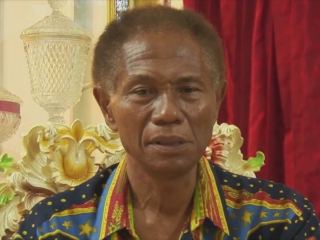 View Clip…
View Clip…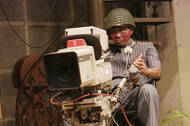
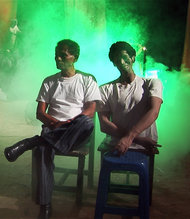
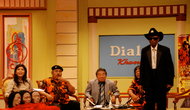
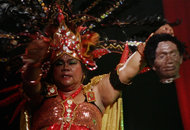
Thank you for giving space to this spotlight on what happened in Indonesia in the 60’s. One group know as the East Timorese were affected. Their plight over a quarter of a century and continuing punishment under another set of colonial masters is similar to The struggle.